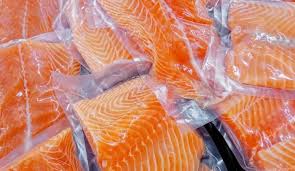
Breaking News
 Grand Theft World Podcast 257 | Foreign Affairs with guest Ernest Hancock
Grand Theft World Podcast 257 | Foreign Affairs with guest Ernest Hancock
 You've Never Seen Tech Like This
You've Never Seen Tech Like This
 Supreme Court Won't Exempt California Schoolchild From Vaccination Mandate
Supreme Court Won't Exempt California Schoolchild From Vaccination Mandate
 Visualizing the abundance of elements in the Earth's crust
Visualizing the abundance of elements in the Earth's crust
Top Tech News
 3D Printed Aluminum Alloy Sets Strength Record on Path to Lighter Aircraft Systems
3D Printed Aluminum Alloy Sets Strength Record on Path to Lighter Aircraft Systems
 Big Brother just got an upgrade.
Big Brother just got an upgrade.
SEMI-NEWS/SEMI-SATIRE: October 12, 2025 Edition
 Stem Cell Breakthrough for People with Parkinson's
Stem Cell Breakthrough for People with Parkinson's
 Linux Will Work For You. Time to Dump Windows 10. And Don't Bother with Windows 11
Linux Will Work For You. Time to Dump Windows 10. And Don't Bother with Windows 11
 XAI Using $18 Billion to Get 300,000 More Nvidia B200 Chips
XAI Using $18 Billion to Get 300,000 More Nvidia B200 Chips
 Immortal Monkeys? Not Quite, But Scientists Just Reversed Aging With 'Super' Stem Cells
Immortal Monkeys? Not Quite, But Scientists Just Reversed Aging With 'Super' Stem Cells
 ICE To Buy Tool That Tracks Locations Of Hundreds Of Millions Of Phones Every Day
ICE To Buy Tool That Tracks Locations Of Hundreds Of Millions Of Phones Every Day
 Yixiang 16kWh Battery For $1,920!? New Design!
Yixiang 16kWh Battery For $1,920!? New Design!
 Find a COMPATIBLE Linux Computer for $200+: Roadmap to Linux. Part 1
Find a COMPATIBLE Linux Computer for $200+: Roadmap to Linux. Part 1
No More 'Sniff Tests': Cheap Biodegradable Sensors Can Tell Smartphones When Food Has Gone B

In order to help detect spoilage and reduce food waste for supermarkets and consumers, researchers have developed new low-cost, smartphone-linked, eco-friendly spoilage sensors for meat and fish packaging.
One in three UK consumers throw away food solely because it reaches the "use-by" date, but 60% (4.2 million tonnes) of the £12.5 billion-worth of food we throw away each year is safe to eat.
The laboratory prototype sensors cost two US cents each to make. Known as "paper-based electrical gas sensors" (PEGS), they detect spoilage gases like ammonia and trimethylamine in meat and fish products.
The sensor data can be read by smartphones, so that people can simply hold their phone up to the packaging to see whether the food is safe to eat.
The Imperial College London researchers who developed PEGS crafted the sensors by printing carbon electrodes onto readily available cellulose paper. The biodegradable materials are eco-friendly and nontoxic, so they don't harm the environment and are safe to use in food packaging. The sensors are then combined with "near field communication (NFC)" tags—a series of microchips that can be read by nearby mobile devices.
During laboratory testing on packaged fish and chicken, PEGS picked up trace amounts of spoilage gases quickly and more accurately than existing sensors, at a fraction of their price.
The researchers, whose findings were published in ACS Sensors, say the sensors could also eventually replace the "use-by" date—a less reliable indicator of freshness and edibility. Lower costs for retailers may also eventually lower the cost of food for consumers.



